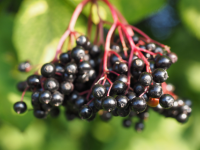Eurofins US Food Announcements & News
Search >>
June 24th, 2025– In response to evolving regulatory expectations and growing public health concerns for Bisphenol A (BPA), Eurofins Food Chemistry Testing Madison, Inc. (EFCT) has expanded its advanced testing capabilities to detect and quantify BPA. Read our press release to learn more.
HPTLC is more than just a laboratory technique; it’s a cornerstone of quality assurance in botanical testing. This article delves into the information that should accompany your sample, explaining its scientific significance and role in meeting regulatory standards, in order to ensure accurate analysis.
Discover the crucial role of botanical reference materials (BRMs) in supplement quality and regulatory compliance. Learn how BRMs help ensure product integrity and support industry standards.
As the popularity of the natural mood-enhancing properties of sceletium alkaloids increases, the volume of products containing these compounds will increase, and therefore also the need for robust and selective methods for determining the concentration of alkaloids within these products. Watch our webinar about an innovative HPLC-DAD method for the determination of sceletium alkaloids in powders, capsule fills, and tablets. Originally Aired May 15, 2025
When the analysis performed on a client's green tea extract sample was deemed inconclusive, the client was left unable to confirm the extract’s quality and consistency. Learn how the team of botanical experts at the Eurofins Botanical Laboratory solved this challenge.
The botanical industry’s unprecedented surge in popularity brings exciting possibilities, but it also invites a serious challenge: adulteration. This blog explains how to identify adulterated botanicals and the role of third-party testing in protecting consumer health and trust.
Ensuring high-quality ingredients and finished botanical products requires a precise and reliable analytical method. This webinar introduces a fundamental approach to botanical analysis: High Performance Thin Layer Chromatography (HPTLC), a powerful tool for maintaining accuracy and consistency in botanical raw materials and final formulations. Originally Aired on April 21, 2025
A client approached Eurofins with an urgent need for testing to support their Investigational New Drug (IND) application for an orally delivered botanical drug product. Read to learn how Eurofins helped to client move forward with their phase 2 clinical trials and meeting critical development milestones.
Keywords:
Case Study
Botanicals
Contaminants like ochratoxin A in botanicals and aflatoxins in raw materials pose serious risks to product quality and consumer health. Targeted mycotoxin testing for supplements is critical to meet global compliance standards and protect your brand from costly recalls or regulatory action. Click to learn more.
Testing complex botanical matrices using HPTLC goes beyond simply running a sample through a machine—it requires a deep understanding of both the plant material’s unique properties and the strengths and limitations of HPTLC. In this article, we’ll explore the intricacies of testing complex botanical samples using HPTLC, highlighting the challenges involved and how this technique can effectively overcome them—even in the most complex matrices.
















